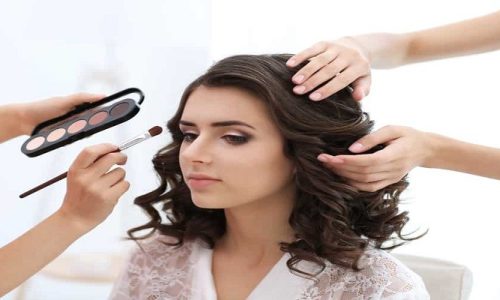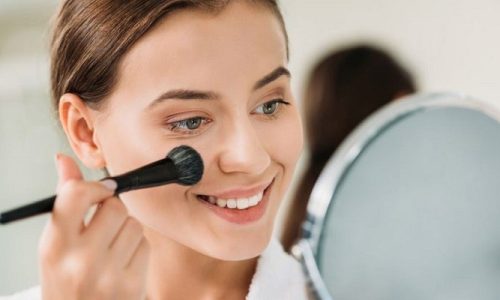Last Updated on June 18, 2025 by Jaclyn A. Neeley
A stye, also known as a hordeolum, is a painful, red bump that forms on the edge of the eyelid, often resembling a pimple or boil. It is caused by a bacterial infection, typically involving the Staphylococcus bacteria, which infects the oil glands or hair follicles in the eyelid. Styes can be uncomfortable and unsightly, leading many to wonder if it is safe to wear makeup while dealing with this condition. This article will explore the implications of wearing makeup with a stye, provide guidelines for safe makeup use, and offer tips for preventing and treating styes.
Styes
A stye is an infection of the oil glands in the eyelid, resulting in a red, swollen, and often painful lump near the edge of the eyelid. Styes can be external, forming on the outer edge of the eyelid, or internal, developing inside the eyelid. Symptoms of a stye include redness, swelling, tenderness, tearing, and a sensation of having something in the eye.
Causes of Styes
Styes are primarily caused by bacterial infections, most commonly involving Staphylococcus bacteria. These bacteria can enter the oil glands or hair follicles through various means, such as touching the eyes with unwashed hands, using old or contaminated makeup, or not properly cleaning contact lenses.
Wearing Makeup with a Stye
Wearing makeup with a stye is generally not recommended. Makeup can introduce additional bacteria to the affected area, potentially worsening the infection or causing new styes to form. Additionally, makeup products and applicators can irritate the stye, prolonging the healing process and increasing discomfort.
Risks of Wearing Makeup
- Bacterial Contamination: Makeup products, especially those used around the eyes, can harbor bacteria. Using these products while having a stye can spread bacteria, exacerbating the infection or causing new styes.
- Irritation: Makeup can irritate the sensitive skin around the stye, leading to increased redness, swelling, and pain. Glittery or heavy makeup products are particularly problematic as they can cause further irritation.
- Delayed Healing: Applying makeup over a stye can clog the oil glands further, preventing the stye from draining and healing properly. This can extend the duration of the stye and increase the risk of complications.
Guidelines for Makeup Use with a Stye
While it is best to avoid makeup altogether when you have a stye, there are some precautions you can take if you feel it is absolutely necessary:
- Use Non-Comedogenic Products: Choose makeup products labeled as non-comedogenic, meaning they are less likely to clog pores and oil glands. This can help minimize the risk of further blockages and irritation.
- Avoid Glitter and Heavy Makeup: Steer clear of glittery or heavy makeup products, as these can cause additional irritation to the stye. Opt for lighter, more breathable makeup options.
- Keep Makeup and Brushes Clean: Ensure that all makeup products and applicators are thoroughly cleaned before use. This helps reduce the risk of introducing new bacteria to the affected area.
- Apply Makeup Carefully: Be gentle when applying makeup around the stye. Avoid direct contact with the stye itself and focus on areas away from the infection to minimize irritation.
Preventing Styes
Practicing good eyelid hygiene is crucial in preventing styes. Here are some tips to maintain clean and healthy eyelids:
- Wash Hands Regularly: Always wash your hands thoroughly before touching your eyes or applying makeup. This helps prevent the transfer of bacteria to the eyelids.
- Clean Eyelids: Use a mild, eye-safe cleanser, such as baby shampoo, to gently clean the eyelids. This can help remove excess oils, dead skin cells, and bacteria that can contribute to stye formation.
- Remove Makeup Before Bed: Always remove eye makeup before going to bed to prevent clogging of the oil glands and reduce the risk of infection.
- Replace Old Makeup: Discard old or expired makeup products, as they can harbor bacteria. Replace eye makeup, such as mascara and eyeliner, every three to six months.
Proper Contact Lens Care
If you wear contact lenses, proper hygiene is essential to prevent styes:
- Disinfect Lenses: Regularly disinfect contact lenses according to your eye care provider’s instructions. This helps eliminate bacteria that can cause infections.
- Wash Hands Before Handling Lenses: Always wash your hands before inserting or removing contact lenses to prevent transferring bacteria to your eyes.
- Replace Lenses as Recommended: Follow the recommended replacement schedule for your contact lenses to ensure they remain clean and free of bacteria.
Home Remedies
Most styes can be treated at home with simple remedies:
- Warm Compress: Apply a warm compress to the affected eye for 5-10 minutes, several times a day. This helps reduce swelling, relieve pain, and promote drainage of the stye.
- Gentle Eyelid Massage: After applying a warm compress, gently massage the eyelid to help unblock the oil glands and encourage drainage.
- Keep the Area Clean: Maintain good eyelid hygiene by cleaning the area around the stye with a mild, eye-safe cleanser.
When to See a Doctor
While most styes resolve on their own within a week or two, medical attention may be necessary if:
- The Stye Persists: If the stye does not improve after a week of home treatment, consult a doctor for further evaluation and treatment.
- Severe Pain or Swelling: If the stye causes significant pain, swelling, or affects your vision, seek medical advice.
- Signs of Spreading Infection: If the redness and swelling extend beyond the eyelid to other parts of the face, it may indicate a spreading infection that requires medical intervention.
Conclusion
Wearing makeup with a stye is generally not recommended due to the risk of bacterial contamination, irritation, and delayed healing. It is best to avoid makeup until the stye has fully healed. Practicing good eyelid hygiene, proper contact lens care, and following home remedies can help prevent and treat styes effectively. If a stye persists or causes severe symptoms, seek medical attention to ensure proper treatment and prevent complications.
FAQs
What to do if you have to wear makeup with a stye?
If you must wear makeup with a stye, choose non-comedogenic products and avoid glitter to prevent further irritation. Ensure all makeup and brushes are clean to avoid spreading bacteria. Apply makeup carefully to avoid direct contact with the stye and keep the area around it clean.
What not to do when you have a stye?
When you have a stye, avoid wearing eye makeup, as it can carry bacteria and worsen the infection. Do not try to pop or squeeze the stye, as this can spread the infection. Also, refrain from touching or rubbing your eyes to prevent further irritation and contamination.
What makes a stye worse?
A stye can worsen if you touch it with unwashed hands, use old or contaminated makeup, or leave eye makeup on overnight. Popping or squeezing the stye can also spread the infection and increase inflammation. Poor hygiene and not cleaning contact lenses properly can exacerbate the condition.
What are the symptoms of a stye?
Symptoms of a stye include a red, painful lump near the edge of the eyelid, swelling, tearing, and a sensation of a foreign object in the eye. The lump may be filled with pus and can cause tenderness, light sensitivity, and crusting along the eyelid.
How to prevent styes from recurring?
To prevent styes from recurring, maintain good eyelid hygiene by washing your hands before touching your eyes, removing eye makeup before bed, and regularly cleaning makeup brushes. Avoid using old or expired cosmetics and ensure contact lenses are properly disinfected. Applying a warm compress daily can also help.







